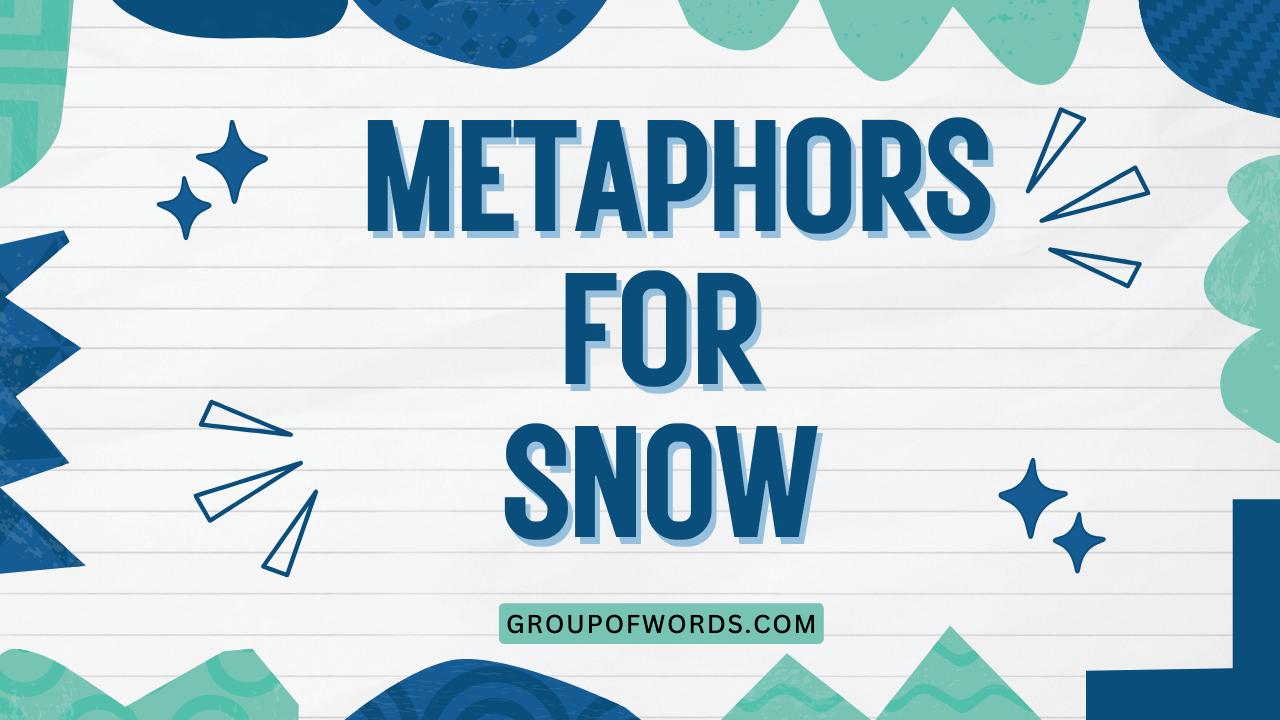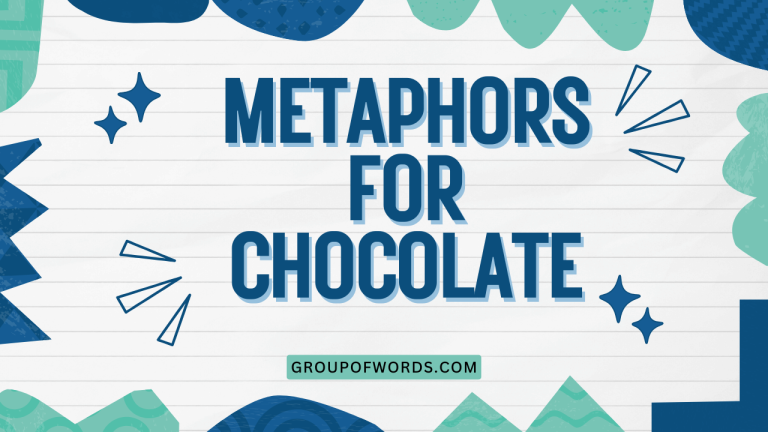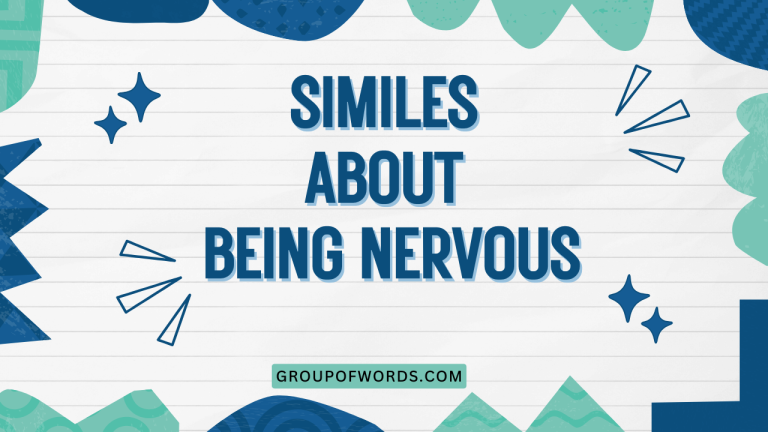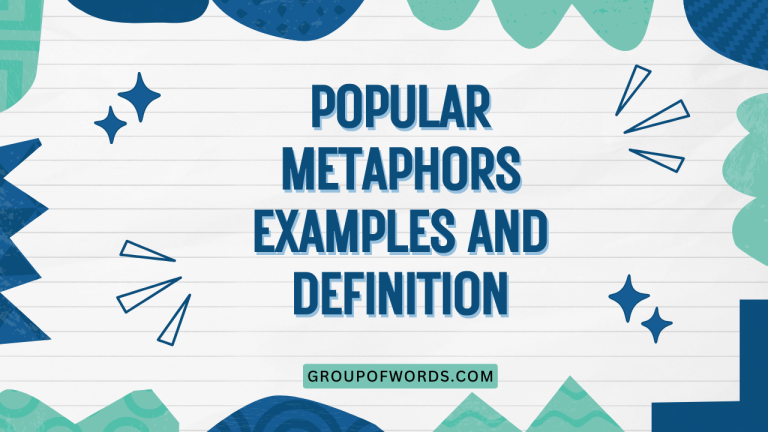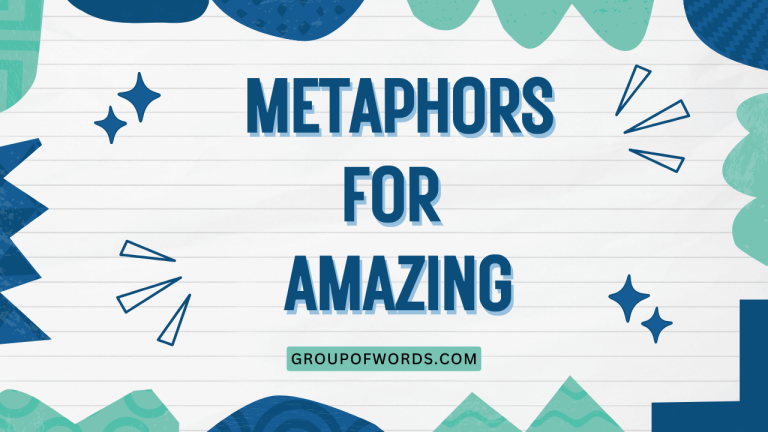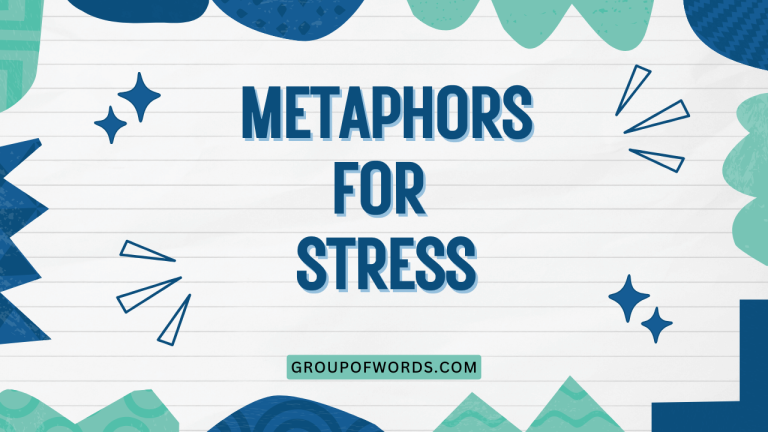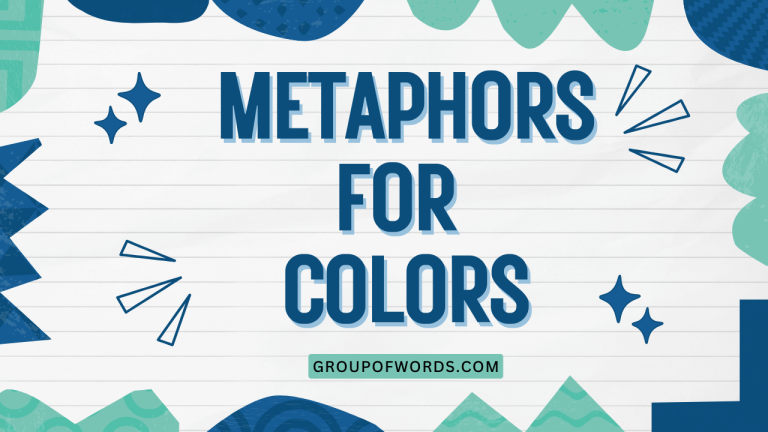Snowy Similes: Mastering Metaphors for Winter’s Wonders
Metaphors are powerful tools in the English language, allowing us to paint vivid pictures with words and convey complex ideas in an engaging way. Understanding metaphors, especially those related to specific themes like snow, enhances both our reading comprehension and writing skills.
This article delves into the world of snow metaphors, exploring their structure, types, and usage, providing you with the knowledge and practice to master this fascinating aspect of language. Whether you’re a student, writer, or simply an English enthusiast, this guide will equip you with the tools to appreciate and create compelling snow metaphors.
From comparing snowflakes to diamonds to describing a blizzard as a furious beast, snow metaphors enrich our descriptive abilities and offer fresh perspectives on familiar winter scenes. By mastering these metaphorical expressions, you’ll not only improve your language skills but also gain a deeper appreciation for the beauty and power of snow.
Table of Contents
- Introduction
- Definition of Metaphor
- Classification of Metaphors
- Function of Metaphors
- Contexts for Using Metaphors
- Structural Breakdown of Snow Metaphors
- Source Domain
- Target Domain
- Ground
- Types and Categories of Snow Metaphors
- Visual Metaphors
- Tactile Metaphors
- Emotional Metaphors
- Behavioral Metaphors
- Examples of Snow Metaphors
- Visual Snow Metaphor Examples
- Tactile Snow Metaphor Examples
- Emotional Snow Metaphor Examples
- Behavioral Snow Metaphor Examples
- Usage Rules for Snow Metaphors
- Appropriateness and Context
- Originality and Creativity
- Clarity and Understanding
- Common Mistakes with Snow Metaphors
- Mixed Metaphors
- Cliches
- Inappropriate Comparisons
- Practice Exercises
- Exercise 1: Identifying Snow Metaphors
- Exercise 2: Creating Snow Metaphors
- Exercise 3: Correcting Incorrect Snow Metaphors
- Advanced Topics in Snow Metaphors
- Extended Snow Metaphors
- Conceits in Snow Metaphors
- Symbolism in Snow Metaphors
- Frequently Asked Questions (FAQ)
- Conclusion
Definition of Metaphor
A metaphor is a figure of speech that directly compares two unrelated things, asserting that one thing *is* another, not literally, but for rhetorical effect. Unlike similes, which use “like” or “as” to make a comparison, metaphors imply a resemblance or shared quality without explicitly stating it. Metaphors enrich language by adding layers of meaning and inviting readers to perceive connections they might not have otherwise considered.
Metaphors operate by transferring qualities from one concept (the source domain) to another (the target domain), creating a new understanding of the target. For example, saying “The snow is a blanket” doesn’t mean snow is literally a blanket. Instead, it implies that snow, like a blanket, covers and provides a sense of comfort or insulation.
Classification of Metaphors
Metaphors can be classified based on their explicitness and structure. Some common classifications include:
- Standard Metaphors: These are explicit comparisons where both the source and target are clearly stated or implied (e.g., “The snow is a white canvas”).
- Implicit Metaphors: These metaphors imply the comparison without directly stating the target (e.g., “The city was buried under a silent shroud,” where the snow is implied to be the shroud).
- Dead Metaphors: These are metaphors that have become so common that they are no longer recognized as metaphors (e.g., “the foot of the mountain”).
- Mixed Metaphors: These are combinations of two or more incompatible metaphors, often creating a nonsensical or humorous effect (e.g., “Let’s nip it in the bud and then iron out the wrinkles”).
Function of Metaphors
Metaphors serve several important functions in language:
- Enhancing Description: Metaphors make descriptions more vivid and engaging by drawing on sensory imagery and emotional associations.
- Simplifying Complex Ideas: Abstract or complex concepts can be made more understandable by comparing them to familiar things.
- Adding Emotional Impact: Metaphors can evoke powerful emotions and create a deeper connection with the reader.
- Promoting Insight: By inviting readers to see things in a new light, metaphors can lead to fresh perspectives and understandings.
Contexts for Using Metaphors
Metaphors are used in a wide range of contexts, including:
- Literature: Poetry, novels, and plays often use metaphors extensively to enhance imagery and convey deeper meaning.
- Everyday Speech: We use metaphors in everyday conversation to express ourselves more colorfully and effectively.
- Journalism: Metaphors can be used to make news stories more engaging and understandable.
- Advertising: Advertisers use metaphors to create memorable and persuasive messages.
- Scientific Writing: Although less common, metaphors can be used to explain complex scientific concepts to a broader audience.
Structural Breakdown of Snow Metaphors
Understanding the structure of a metaphor helps us to deconstruct and analyze how it works. Every metaphor consists of three key elements: the source domain, the target domain, and the ground.
Source Domain
The source domain is the concept or idea that is used to describe the target domain. It’s the familiar or concrete thing that we’re drawing upon to explain something else. In the context of snow metaphors, the source domain could be anything from a blanket to a diamond, depending on the quality being emphasized.
Target Domain
The target domain is the subject being described or explained. In our case, this is always some aspect of snow – its appearance, texture, impact, or the emotions it evokes. The goal of the metaphor is to shed new light on this target domain.
Ground
The ground is the shared characteristic or similarity between the source and target domains. It’s the basis for the comparison. For example, if we say “The snow is a blanket,” the ground is the shared quality of covering and providing warmth or insulation.
Let’s illustrate this with an example: “The snow was a shimmering curtain.”
- Source Domain: Curtain
- Target Domain: Snow
- Ground: A visual barrier, something that hangs down, and something that can be shimmering or translucent.
Types and Categories of Snow Metaphors
Snow metaphors can be categorized based on the sensory experience or emotional impact they aim to convey. Here are some common categories:
Visual Metaphors
These metaphors focus on the appearance of snow, using comparisons to describe its color, shape, and texture. They often evoke imagery related to light, whiteness, and sparkle.
Tactile Metaphors
These metaphors emphasize the feeling of snow – its coldness, softness, or weight. They often use comparisons to describe its texture and how it feels to the touch.
Emotional Metaphors
These metaphors convey the emotions or feelings associated with snow, such as tranquility, joy, or isolation. They often use comparisons to describe the mood or atmosphere created by snow.
Behavioral Metaphors
These metaphors focus on how snow acts or behaves, such as how it falls, accumulates, or melts. They often use comparisons to describe its movement and impact on the environment.
Examples of Snow Metaphors
To better understand how snow metaphors work, let’s explore some specific examples, categorized by the types discussed above.
Visual Snow Metaphor Examples
The following table provides examples of visual snow metaphors, highlighting the source, target, and ground of each comparison. These metaphors aim to capture the visual characteristics of snow, such as its whiteness, sparkle, and shape.
| Metaphor | Source Domain | Target Domain | Ground |
|---|---|---|---|
| The snow was a diamond dust scattered across the field. | Diamond dust | Snow | Sparkling, glittering |
| The landscape was a blank canvas, waiting for spring’s brush. | Blank canvas | Snow-covered landscape | White, unmarked |
| Snowflakes were tiny ballerinas twirling from the sky. | Ballerinas | Snowflakes | Graceful, delicate, twirling |
| The snow-covered trees were ghostly figures in the moonlight. | Ghostly figures | Snow-covered trees | Ethereal, silent, mysterious |
| The snow was a shimmering veil over the sleeping town. | Shimmering veil | Snow | Covering, translucent, beautiful |
| The field was a sea of white, stretching to the horizon. | Sea | Snow-covered field | Vast, uniform, expansive |
| The snow-laden branches were jeweled arcs against the gray sky. | Jeweled arcs | Snow-laden branches | Sparkling, precious, curved |
| The snow was a soft, white blanket covering the earth. | Blanket | Snow | Covering, soft, white |
| The fresh snow was a layer of powdered sugar on the hills. | Powdered sugar | Snow | Fine, white, coating |
| The snowfall was a curtain of stars descending to earth. | Curtain of stars | Snowfall | Numerous, shimmering, falling |
| The snowdrifts were sculpted dunes in a winter desert. | Sculpted dunes | Snowdrifts | Shaped by wind, undulating, barren |
| Each snowflake was an intricate lace pattern against the dark coat. | Lace pattern | Snowflake | Delicate, intricate, unique |
| The snow-covered rooftops were like frosted cakes in a bakery. | Frosted cakes | Snow-covered rooftops | White, sweet-looking, covered |
| The snow was a river of light flowing down the mountainside. | River of light | Snow | Bright, flowing, continuous |
| The icy branches were glass sculptures glinting in the sun. | Glass sculptures | Icy branches | Transparent, delicate, reflective |
| The frozen lake was a mirror reflecting the winter sky. | Mirror | Frozen lake | Reflective, smooth, cold |
| The snow-covered path was a silver ribbon winding through the woods. | Silver ribbon | Snow-covered path | Narrow, winding, reflective |
| The snow-covered mountains were sleeping giants under a white shroud. | Sleeping giants | Snow-covered mountains | Large, imposing, covered |
| The snow was a white ocean stretching as far as the eye could see. | White ocean | Snow | Vast, uniform, boundless |
| The snow-covered fields were like a photographer’s backdrop, stark and white. | Photographer’s backdrop | Snow-covered fields | Plain, white, uniform |
| The snow was a collection of icy sequins scattered across the landscape. | Icy sequins | Snow | Small, reflective, scattered |
| The snow-covered fences were white pickets guarding a winter wonderland. | White pickets | Snow-covered fences | Upright, linear, guarding |
| The snow-covered trees were like silent sentinels watching over the land. | Silent sentinels | Snow-covered trees | Still, watchful, guarding |
| The snow was a sparkling carpet rolled out for a winter festival. | Sparkling carpet | Snow | Covering, festive, glittering |
| The snow-covered bushes were like mounds of meringue in a bakery window. | Mounds of meringue | Snow-covered bushes | White, fluffy, rounded |
These examples illustrate how visual metaphors can transform our perception of snow, highlighting its beauty and unique characteristics.
Tactile Snow Metaphor Examples
The following table provides examples of tactile snow metaphors, focusing on the feeling of snow. These metaphors aim to capture the sensory experience of touching or being in contact with snow.
| Metaphor | Source Domain | Target Domain | Ground |
|---|---|---|---|
| The snow was a cold kiss on my cheek. | Cold kiss | Snow | Brief, chilling, gentle |
| The snow was a soft, icy sponge under my boots. | Icy sponge | Snow | Absorbent, yielding, cold |
| The blizzard was a biting slap across my face. | Biting slap | Blizzard | Harsh, stinging, forceful |
| The snow was like walking on a cloud of frozen feathers. | Cloud of frozen feathers | Snow | Light, airy, cold |
| The icy wind was a thousand needles pricking my skin. | Thousand needles | Icy wind | Sharp, painful, numerous |
| The snow was a heavy, damp wool clinging to my clothes. | Damp wool | Snow | Heavy, clinging, uncomfortable |
| The snow was a frozen velvet under my fingertips. | Frozen velvet | Snow | Soft, luxurious, cold |
| The snow was a crisp, cold hug from winter. | Cold hug | Snow | Enveloping, chilling, comforting |
| The snow was a chilling blanket wrapped around the town. | Chilling blanket | Snow | Enveloping, cold, covering |
| The snow was like tiny, frozen marbles underfoot. | Frozen marbles | Snow | Small, hard, rolling |
| The snow was a cold, wet shroud clinging to the branches. | Cold, wet shroud | Snow | Clinging, damp, chilling |
| The ice was a razor-sharp edge on the frozen pond. | Razor-sharp edge | Ice | Sharp, dangerous, cutting |
| The snow was a gritty sandpaper under the tires. | Gritty sandpaper | Snow | Rough, abrasive, textured |
| The snow was a cold, clammy hand gripping my face. | Cold, clammy hand | Snow | Unpleasant, chilling, gripping |
| The snow was like walking on crushed ice crystals. | Crushed ice crystals | Snow | Crunchy, cold, sharp |
| The snow was a frozen powder puff against my skin. | Frozen powder puff | Snow | Light, soft, cold |
| The snow was a solid block of ice against the windowpane. | Solid block of ice | Snow | Hard, cold, unyielding |
| The snow was a chilling compress on the feverish earth. | Chilling compress | Snow | Cooling, relieving, cold |
| The snow was like a cold, wet bandage on a wound. | Cold, wet bandage | Snow | Soothing, chilling, covering |
| The snow was a cold, relentless sculptor shaping the landscape. | Relentless sculptor | Snow | Persistent, cold, shaping |
| The snow was a biting wind’s icy grip on the mountain peaks. | Icy grip | Snow | Firm, cold, unyielding |
| The snow was a silent, cold caress across the frozen fields. | Cold caress | Snow | Gentle, chilling, silent |
| The snow was a cold, numbing anesthetic on the winter world. | Numbing anesthetic | Snow | Deadening, chilling, pervasive |
| The snow was a cold, wet blanket smothering the sounds of the city. | Wet blanket | Snow | Suppressing, cold, damp |
| The snow was a cold, icy shield protecting the earth from the sun. | Icy shield | Snow | Protective, cold, reflective |
These tactile metaphors bring the feeling of snow to life, creating a more immersive and sensory experience for the reader.
Emotional Snow Metaphor Examples
The following table provides examples of emotional snow metaphors, focusing on the feelings and moods associated with snow. These metaphors aim to evoke the emotional impact of snow, such as tranquility, joy, or isolation.
| Metaphor | Source Domain | Target Domain | Ground |
|---|---|---|---|
| The snow was a blanket of silence, muffling the world’s noise. | Blanket of silence | Snow | Quiet, peaceful, enveloping |
| The snow was a reminder of childhood wonder, a time of pure joy. | Childhood wonder | Snow | Innocent, joyful, nostalgic |
| The blizzard was a furious beast, unleashing its wrath upon the town. | Furious beast | Blizzard | Violent, destructive, powerful |
| The snow was a lonely sentinel, standing guard over the deserted landscape. | Lonely sentinel | Snow | Isolated, watchful, silent |
| The snow was a peaceful lullaby, soothing the restless earth. | Peaceful lullaby | Snow | Calming, gentle, comforting |
| The snow was a crisp, clean slate, offering a fresh start. | Clean slate | Snow | New, unmarked, promising |
| The snow was a heavy cloak of sorrow, draping the world in sadness. | Cloak of sorrow | Snow | Depressing, heavy, enveloping |
| The snow was a soft whisper of hope, promising spring’s return. | Whisper of hope | Snow | Promising, gentle, encouraging |
| The snow was a cold embrace of winter’s solitude. | Cold embrace | Snow | Isolating, quiet, encompassing |
| The snow was a serene mask, concealing the world’s imperfections. | Serene mask | Snow | Concealing, peaceful, calming |
| The snow was a somber shroud, draping the landscape in mourning. | Somber shroud | Snow | Mournful, depressing, covering |
| The snow was a joyful dance, celebrating winter’s arrival. | Joyful dance | Snow | Festive, lively, celebratory |
| The snow was a quiet retreat, offering respite from the world’s chaos. | Quiet retreat | Snow | Peaceful, secluded, calming |
| The snow was a stark reminder of nature’s power. | Stark reminder | Snow | Forceful, imposing, undeniable |
| The snow was a peaceful dream, transforming the world into a tranquil escape. | Peaceful dream | Snow | Calming, transformative, serene |
| The snow was a cold barrier, isolating the town from the outside world. | Cold barrier | Snow | Isolating, separating, unyielding |
| The snow was a magical spell, turning the ordinary into the extraordinary. | Magical spell | Snow | Transformative, enchanting, wondrous |
| The snow was a soft blanket of memories, wrapping the past in nostalgia. | Blanket of memories | Snow | Nostalgic, comforting, enveloping |
| The snow was a silent promise of winter’s end, anticipating spring’s rebirth. | Silent promise | Snow | Anticipatory, hopeful, reassuring |
| The snow was a peaceful sigh, releasing the world’s tension. | Peaceful sigh | Snow | Relieving, calming, gentle |
| The snow was a stark canvas of solitude, inviting introspection. | Canvas of solitude | Snow | Isolated, reflective, quiet |
| The snow was a cold wall of separation, dividing the community. | Cold wall | Snow | Isolating, divisive, unyielding |
| The snow was a peaceful shroud of forgiveness, covering past mistakes. | Shroud of forgiveness | Snow | Redemptive, concealing, calming |
| The snow was a joyful messenger, announcing the arrival of the holiday season. | Joyful messenger | Snow | Festive, celebratory, welcoming |
| The snow was a peaceful guardian, protecting the land in its winter slumber. | Peaceful guardian | Snow | Protective, watchful, calming |
These emotional metaphors add depth and feeling to descriptions of snow, creating a more profound and resonant experience for the reader.
Behavioral Snow Metaphor Examples
The following table provides examples of behavioral snow metaphors, focusing on how snow acts or behaves. These metaphors aim to capture the movement and impact of snow on the environment.
| Metaphor | Source Domain | Target Domain | Ground |
|---|---|---|---|
| The snow devoured the landscape, swallowing every trace of green. | Devoured | Snow | Consuming, overwhelming, covering |
| The snow whispered secrets as it fell, carried on the wind’s breath. | Whispered secrets | Snow | Quiet, mysterious, gentle |
| The snow danced and swirled, a chaotic ballet in the winter sky. | Chaotic ballet | Snow | Moving, swirling, unpredictable |
| The snow crept silently, a thief stealing the colors of autumn. | Stealing thief | Snow | Sneaky, silent, transformative |
| The snow marched forward, an army of white conquering the land. | Conquering army | Snow | Powerful, relentless, overwhelming |
| The snow melted into tears, mourning the end of winter’s reign. | Melted into tears | Snow | Sad, transformative, ephemeral |
| The blizzard roared like a lion, shaking the foundations of the town. | Roared like a lion | Blizzard | Loud, powerful, threatening |
| The snow played hide-and-seek with the sun, appearing and disappearing. | Hide-and-seek | Snow | Elusive, playful, intermittent |
| The snow clung to the branches like desperate fingers. | Desperate fingers | Snow | Clinging, tenacious, persistent |
| The snow reclaimed the streets, erasing the paths of daily life. | Reclaimed streets | Snow | Transformative, overwhelming, erasing |
| The snow cascaded down the mountainside, a waterfall of white. | Waterfall of white | Snow | Flowing, abundant, powerful |
| The snow drifted lazily, carried by the wind’s gentle hand. | Drifted lazily | Snow | Gentle, slow, meandering |
| The snow advanced steadily, a silent invasion of winter’s chill. | Silent invasion | Snow | Relentless, pervasive, encroaching |
| The snow retreated grudgingly, yielding to the warmth of spring. | Retreated grudgingly | Snow | Reluctant, slow, diminishing |
| The snow blanketed the world, a silent promise of winter’s rest. | Blanketed the world | Snow | Enveloping, protective, calming |
| The snow sculpted the landscape, creating a winter wonderland. | Sculpted the landscape | Snow | Transformative, artistic, shaping |
| The snow swallowed sound, creating a world of hushed tranquility. | Swallowed sound | Snow | Muffling, silencing, calming |
| The snow embraced the trees, transforming them into ghostly figures. | Embraced the trees | Snow | Enveloping, transformative, ghostly |
| The snow whispered through the pines, a secret language of winter. | Whispered through the pines | Snow | Quiet, mysterious, communicative |
| The snow slumbered peacefully, awaiting the call of spring. | Slumbered peacefully | Snow | Resting, quiet, expectant |
| The snow danced wildly, a frenzied celebration of winter’s power. | Danced wildly | Snow | Energetic, chaotic, festive |
| The snow crept stealthily, a silent shadow across the moonlit fields. | Crept stealthily | Snow | Sneaky, silent, pervasive |
| The snow raged furiously, a tempest of white fury. | Raged furiously | Snow | Violent, powerful, uncontrolled |
| The snow lingered reluctantly, mourning the approaching warmth. | Lingered reluctantly | Snow | Unwilling, slow, diminishing |
| The snow melted silently, surrendering to the sun’s gentle touch. | Melted silently | Snow | Quiet, yielding, transformative |
These behavioral metaphors add dynamism and action to descriptions of snow, creating a more engaging and vivid portrayal of its impact on the world.
Usage Rules for Snow Metaphors
While metaphors can greatly enhance writing, it’s important to use them effectively and appropriately. Here are some key rules to keep in mind when crafting snow metaphors.
Appropriateness and Context
Ensure that the metaphor is appropriate for the context and audience. A metaphor that works well in a poem might not be suitable for a scientific report.
Consider the tone and purpose of your writing, and choose metaphors that align with them.
Originality and Creativity
Strive for originality in your metaphors. Overused or clichéd metaphors can weaken your writing.
Try to find fresh and unexpected comparisons that will surprise and delight your readers.
Clarity and Understanding
Make sure that the metaphor is clear and understandable. While metaphors are meant to be evocative, they should not be so obscure that they confuse the reader.
The connection between the source and target domains should be readily apparent.
Common Mistakes with Snow Metaphors
There are several common mistakes that writers make when using metaphors. Being aware of these pitfalls can help you avoid them and create more effective metaphors.
Mixed Metaphors
A mixed metaphor combines two or more incompatible metaphors, creating a nonsensical or humorous effect. Avoid mixing metaphors, as they can confuse the reader and undermine your credibility.
Incorrect: “The snow was a blanket of silence that nipped at my heels.” (Mixing a blanket with something that nips.)
Correct: “The snow was a blanket of silence, muffling the world’s noise.”
Cliches
Cliches are overused metaphors that have lost their impact. Avoid using clichéd metaphors, as they can make your writing seem unoriginal and uninspired.
Cliché: “The snow was as white as snow.”
Better: “The snow was a pristine canvas, untouched by the world.”
Inappropriate Comparisons
Avoid comparisons that are offensive, insensitive, or simply don’t make sense. The metaphor should be respectful and relevant to the topic at hand.
Inappropriate: “The snow was like a disease spreading across the land.” (Negative and potentially offensive.)
Better: “The snow was a peaceful transformation of the landscape.”
Practice Exercises
To help you master the art of snow metaphors, here are some practice exercises. Each exercise focuses on a different aspect of metaphor creation and usage.
Exercise 1: Identifying Snow Metaphors
Instructions: Read each sentence and identify whether it contains a metaphor. If it does, identify the source domain, target domain, and ground.
| Sentence | Metaphor? (Yes/No) | Source Domain | Target Domain | Ground | |
|---|---|---|---|---|---|
| The snow fell softly on the ground. | |||||
| The snow was a white ocean stretching to the horizon. |
Exercise 2: Creating Snow Metaphors
Instructions: Create a metaphor for snow based on each of the following prompts:
- Describe the sound of snow falling using a metaphor.
- Describe the feeling of walking in deep snow using a metaphor.
- Describe the appearance of a snow-covered forest using a metaphor.
Exercise 3: Correcting Incorrect Snow Metaphors
Instructions: Identify and correct the mistakes in the following sentences. Explain why the original sentence is incorrect and provide a corrected version.
- The snow was a blanket of ice that screamed in the wind.
- The snow was as white as snow, covering everything in its path.
- The snow was like a plague, destroying the city.
Advanced Topics in Snow Metaphors
For those looking to delve deeper into the world of snow metaphors, here are some advanced topics to explore.
Extended Snow Metaphors
An extended metaphor is a metaphor that is sustained over several lines or paragraphs. It allows for a more detailed and nuanced comparison, creating a richer and more complex image in the reader’s mind. When using extended metaphors, ensure that the comparison remains consistent and coherent throughout the passage.
Conceits in Snow Metaphors
A conceit is an elaborate and often surprising metaphor that forms the basis of a poem or passage. Conceits are typically more intellectual and less immediately apparent than standard metaphors, requiring the reader to think more deeply about the comparison being made. Snow can be a rich source of conceits, inviting writers to explore unexpected and thought-provoking connections.
Symbolism in Snow Metaphors
Snow is often used as a symbol in literature, representing themes such as purity, innocence, death, or transformation. When crafting snow metaphors, consider the symbolic associations of snow and how they can be used to enhance the meaning of your writing.
A well-chosen snow metaphor can add layers of symbolism to your work, making it more resonant and meaningful.
Frequently Asked Questions (FAQ)
What is the difference between a metaphor and a simile?
A metaphor directly equates two things (e.g., “The snow is a blanket”), while a simile uses “like” or “as” to make a comparison (e.g., “The snow is like a blanket”).
How can I avoid using clichéd snow metaphors?
Strive for originality by thinking about unique and unexpected qualities of snow. Consider sensory details and emotional associations that haven’t been overused.
What makes a snow metaphor effective?
An effective snow metaphor is clear, appropriate for the context, and adds depth or insight to the description of snow. It should also be original and engaging for the reader.
Can metaphors be used in scientific writing?
Yes, but sparingly. Metaphors can help explain complex concepts, but they should be used with caution to avoid ambiguity or misleading the reader.
How do I identify the ground in a metaphor?
The ground is the shared characteristic or similarity between the source and target domains. Ask yourself what qualities the two things have in common.
Conclusion
Mastering the art of snow metaphors can significantly enhance your writing and deepen your appreciation for the beauty and complexity of language. By understanding the structure, types, and usage rules of metaphors, you can create vivid and engaging descriptions of snow that resonate with your readers.
Whether you’re crafting a poem, writing a story, or simply trying to express yourself more effectively, snow metaphors offer a powerful tool for enriching your language and conveying your unique perspective on the wonders of winter.
